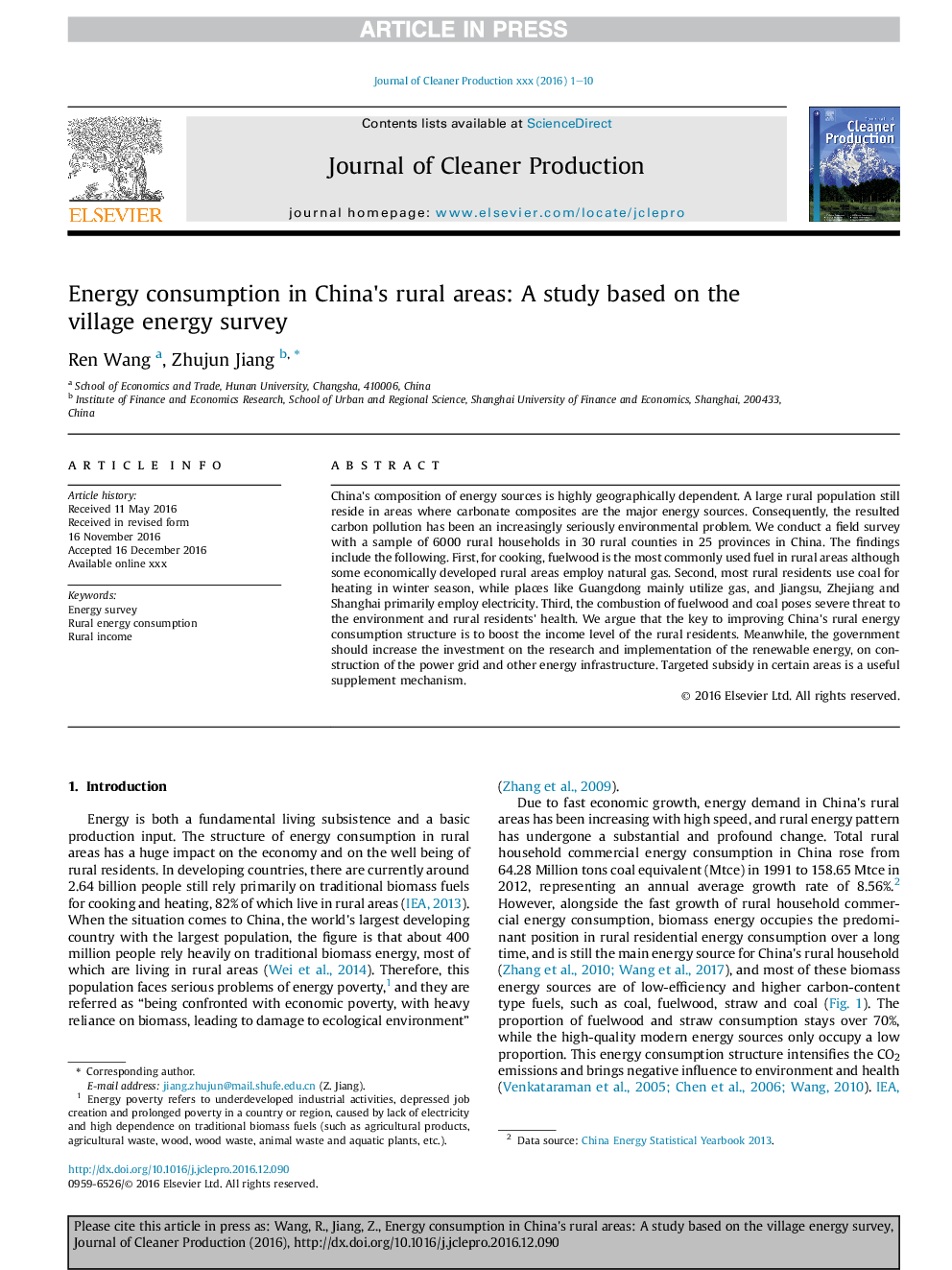| Article ID | Journal | Published Year | Pages | File Type |
|---|---|---|---|---|
| 5481095 | Journal of Cleaner Production | 2017 | 10 Pages |
Abstract
China's composition of energy sources is highly geographically dependent. A large rural population still reside in areas where carbonate composites are the major energy sources. Consequently, the resulted carbon pollution has been an increasingly seriously environmental problem. We conduct a field survey with a sample of 6000 rural households in 30 rural counties in 25 provinces in China. The findings include the following. First, for cooking, fuelwood is the most commonly used fuel in rural areas although some economically developed rural areas employ natural gas. Second, most rural residents use coal for heating in winter season, while places like Guangdong mainly utilize gas, and Jiangsu, Zhejiang and Shanghai primarily employ electricity. Third, the combustion of fuelwood and coal poses severe threat to the environment and rural residents' health. We argue that the key to improving China's rural energy consumption structure is to boost the income level of the rural residents. Meanwhile, the government should increase the investment on the research and implementation of the renewable energy, on construction of the power grid and other energy infrastructure. Targeted subsidy in certain areas is a useful supplement mechanism.
Keywords
Related Topics
Physical Sciences and Engineering
Energy
Renewable Energy, Sustainability and the Environment
Authors
Ren Wang, Zhujun Jiang,
